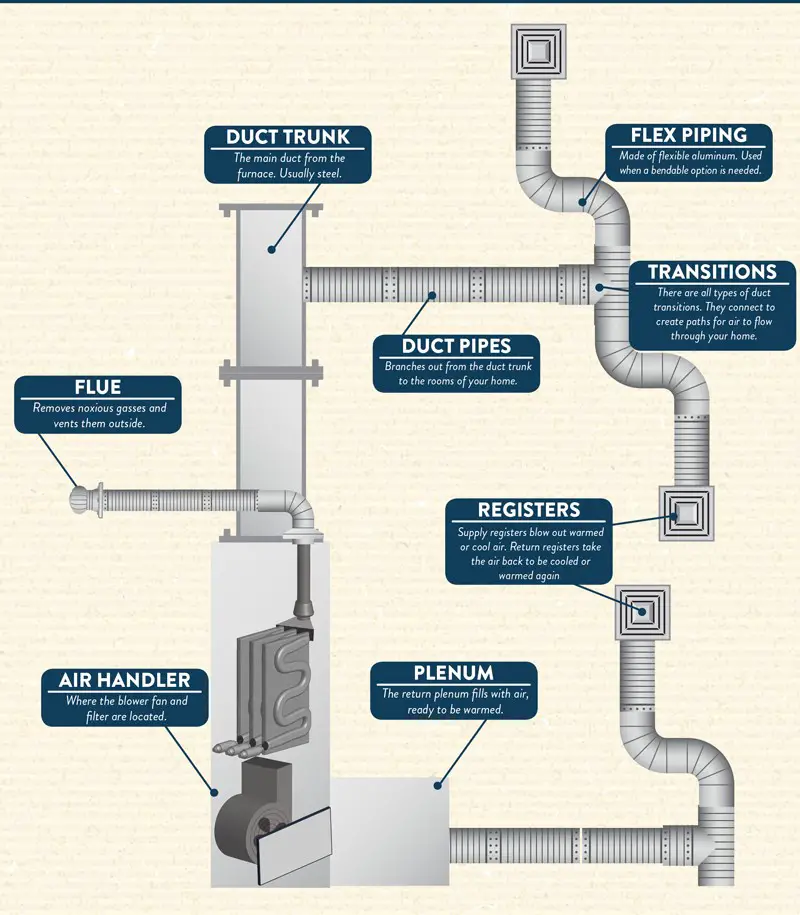You can find ductwork in every cooling and heating system or every HVAC system, whether commercial or residential. Ducts run through the ceilings and walls, and every room contains a rectangular opening for vent installation to have efficient airflow. HVAC Access Doors and Panels are essential for every ductwork in the building for easy access to such areas.

It is vital to understand the importance of the ductwork components and design and ensure the best and efficient performance of HVAC system ductwork.
Ductwork Role
Ductwork carries the cold or heated air from the HVAC system going throughout the building. It serves as a pathway so that the conditioned air will not go anywhere and reach specific areas in the building that need to be cool or warm. Ductwork is a vital component of indoor comfort in every building structure.
Ductwork Components
- AHU
The Air Handling Unit or AHU frequently attaches to the duct system. The AHU is a huge metal box that contains heating or cooling elements, sound attenuators, blower, rack filters or chambers, and dampers.
The metal box with a galvanized sheet material or the ductwork is responsible for circulating and regulating the air as part of the ventilation system. There is an outdoor or indoor design of AHU units available in the market, also known as PU or package unit or RTU rooftop unit.
- Dampers
There are a variety of functions on every damper in the system. One role of the dampers is to regulate the airflow from the AHU system. It serves as the system’s volume control, while the combination of smoke and fire dampers will seal off the duct when it detects smoke or fire.
Different dampers used for commercial buildings include Thermal, Air Measuring, Heavy Duty/Industrial, Balancing, Relief, Low Leakage, Marine, Tunnel Transit, and Zone dampers.
- Outlets, Diffusers, and Registers
The role of outlets, diffusers, grilles, and registers will divide the airflow through truck and branch ductwork design. It will introduce conditioned air in the space to achieve even air distribution and mixing with minimum noise.
And the register box, known as the floor box, a galvanized steel grille with the moving parts, will open and close the airflow of the ductwork.
- Vents
These are typically on the ceiling space with their edges corresponding to the duct opening above. As conditioned air pours through the ductwork, vents will disperse the conditioned air into the room below.
Usually, the ventilation system is a metal sheet that handles different temperatures. The vent consists of a rectangular frame with thin metal slats angles to direct the conditioned air downward. Mainly it includes manual control that allows the user to change the airflow direction.
- Duct fittings
Duct fittings include tees, reducers, and ells are responsible for balancing and equalizing the duct pressure airflow.
Another fitting of ductwork is the vent cap; It protects the ductwork vent stack open end. Duct fitting plays a vital role in the overall performance of the ductwork.
- Plenum
It is an essential part of ductwork in commercial HVAC systems. It serves as an air distribution box for the central collection and distribution of the conditioned airflow in the HVAC system.
The plenum has two types the supply plenum, which directs the airflow from the AHU unit, and the REturn Plenum that carries from large return grilles going back to the AHU unit system.
- Take-offs
The take-offs are round or rectangular fittings that will take the correct airflow from the central ductwork going into the branch ductwork. It allows a maximum amount of air to flow downstream to make the system easier to balance and saves energy.
Conclusion
The ductwork components for the ventilation system usually consist of metal sheets used to direct the conditioned airflow going to the building spaces. HVAC Access Doors and Panels are essential for this system and provide easy access during maintenance and check-up for the whole HVAC and ductwork system to keep its efficiency. Moreover, knowing these essential ductwork components will be helpful in the long run, especially when your commercial building meets problems. Having a working knowledge of the parts will help determine which areas need thorough attention.